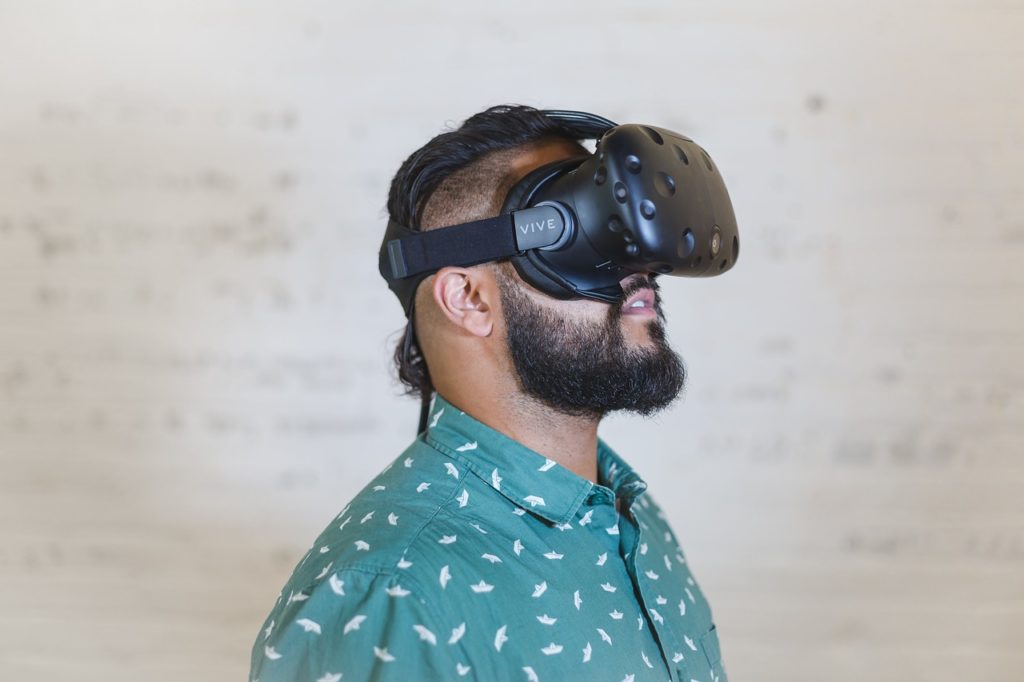Imagine that you can put on a hearing aid and completely immerse yourself in a game, movie or social experience different from any other type. This is the promise of the recently released OculusRift technology that falls under the category of virtual reality. The days of watching television or playing a video game meters away are coming to an end. In contrast, virtual reality technology allows the user to feel as if they are directly in the projected environment through the headphones.
This technology was initially designed to create a gaming experience like no other. However, the implications of virtual reality in our lives expand beyond leisure. This article will highlight how virtual reality can change the way we approach our health, both physically and mentally.
What is Virtual Reality?

With the current enthusiasm surrounding virtual reality, it is easy to assume that it is a recent technology. Contrary to popular belief, the term “virtual reality” was coined in 1987 by the computer scientist JaronLanier and has been an active research topic for 70 years (VRS, 2016). While this technology has been around for a while, it only recently caught the public’s eye with the discovery of OculusRift and other similar devices.
The online technology magazine CNET describes virtual reality as “a computer-generated environment that allows you to experience a different reality.” The associated headset adapts to your eyes and projects virtual images through two lenses. In this way, instead of seeing your current environment, you immerse yourself completely in the virtual one.
This is contrasted with augmented reality, which superimposes computer-generated improvements to existing reality (for example, playground lines added to televised sporting events) (Lindsay, 2016).
Outside of games and entertainment, virtual reality is also branching out in the field of health. There are several areas of surgery and mental illness where virtual reality can be beneficial.
It can be easy to see how virtual reality can benefit the gaming and entertainment industries, but its contribution to the field of health is a little darker.
Imagine yourself as a young doctor. It’s time to help in your first surgery and you have studied the procedure a thousand times; You can recite it while you sleep. You have seen all the videos and studied all the diagrams. Still, upon entering the surgery room with trembling hands, I wish I could have practiced it only once without hurting anyone. In the next few years, that will become a real possibility.
The world of virtual reality allows us to create specialized programs that mimic various surgeries. At this time, the field is limited with few procedures and is used more as a complementary learning tool than as a fundamental tool.
Not all students have access to the available programs. One company, SimulatedSurgicals, is at the forefront of this field, offering virtual reality practice programs for surgeries that require robotics.
According to its website, currently only offer four practical surgeries: lymph node dissection, hysterectomy (surgery to remove the uterus), prostatectomy (removal of the prostate) and cystectomy (removal of an abnormal cyst). SimulatedSurgicals promises “to be able to practice a real surgical procedure without representing any risk for a patient …”.
While virtual reality surgeries have not yet proven to be more effective than traditional training methods (Erin, 2015), there are still a variety of benefits for this type of training.
First, it can be less expensive. Carcasses and other costly training procedures, including the use of animal models, can be replaced by virtual reality training, allowing training hospitals to save money that can be used elsewhere. More importantly, it was shown to improve patient outcomes.
A study conducted by Dr. Seymour et al. Sixteen surgical residents were randomly selected to learn how to perform the gallbladder extraction and then present it to expert professionals. The students were grouped into two conditions: half received virtual reality training for surgery, while the other half received training using traditional methods.
When tested, both groups had the same success, but the virtual reality group seemed more likely to get there.
It was shown that the virtual reality group performed the surgery 29% faster than their counterparts and was five times less likely to make small mistakes. The results speak for themselves by showing the advantage of virtual reality training.
Considering its current practicality and convenience for this purpose, we should expect to see a wider variety of surgeries available for future practice. For example, developers are working on creating a virtual reality training program to operate on the liver.
A report written by Marescaux et. Al indicates that the liver is a particularly difficult body to function because of its complexity and variety among species and even individuals.
Because of this, many of the current models and training procedures are insufficient when preparing students for liver surgery.
Using virtual reality in combination with 3D modeling tools and body scanners, students will be able to practice with virtual 3D models of their patients’ lives.
Virtual reality is not just a tool that helps to heal your physical illnesses. It is also good for the mind. Virtual reality can serve as a unique tool by tricking your mind into thinking that it is about another person, while your physical well-being will remain in one place.
Do you feel a little stressed? Why not take a pleasant and relaxing hours on the beach to watch the waves break? Feeling lonely? You could make a video call to your parents and join them at home for dinner.
Do you feel a little depressed? Use virtual reality to play with some puppies. The possibilities are endless. Giving us the opportunity to truly escape, virtual reality will be an invaluable tool used to calm our nerves and improve our mental well-being.
What about some of the most harmful mental illnesses? Virtual reality technology is already at a level that allows you to treat phobias through exposure therapy, although it is not yet a popular treatment method. Exposure therapy, according to the National Center for PTSD, is a form of therapy in which the patient is repeatedly exposed to a frightening or frightening scenario.
The idea is that with a long-term exposure, the situation will be less stressful. The treatment begins slowly, perhaps just by looking at the images of your fear, and once you feel comfortable, go to the next level until you are ready to face your fears.
Using computer-based environments, therapists can expose their patients to rescue situations without having to apply them physically in the world. Instead, this can be done from the comfort of your office. In addition, the treatments can be very personal for each patient and their special fear.
This will allow phobias to be processed faster than standard exposure treatment, due to exposure to fear in the real world. This can be difficult to achieve if you are afraid of sharks and live in Canada. With virtual reality, sharks can come to you to overcome them with therapies.
The benefit of the virtual reality

A study conducted by Morina et al. He investigated the effectiveness of virtual reality with respect to the treatment of various phobias, including spiders and heights. They used virtual reality to simulate real-world situations and used exposure therapy to treat their patients.
They discovered that their patients were doing much better after the therapy, compared to before, which indicates that their phobias affected their daily lives less and that they were less afraid than they had been before.
There is little research to show if virtual reality is better than traditional exposure therapy, but current results show that it is an effective treatment method.
Following that virtual reality can be used to address various fears, Daniel and Jason Freeman wondered if it could be used in a different kind of fear: paranoia, fear of the imminent danger of various targets in their environment, notably people.
Paranoia is often a symptom of schizophrenia and is notoriously difficult to treat. According to the Mayo Clinic, schizophrenia is traditionally treated with antipsychotics and treatment must continue throughout the individual’s life.
Therapy is recommended for those living with schizophrenia, focusing on controlling stress and getting acclimated to society. There is no specific intervention to deal with the paranoid madness that many experience.
Freeman’s treatment followed the condition of the exposure treatment: they wanted to use virtual reality to put their patients in social situations. The scenarios included being on a crowded street or train, and patients were asked to look or talk to people in their environment that caused them stress.
With long-term exposure, patients would learn that there was nothing to confirm the paranoia and that it would decrease. Their study included 30 patients who experienced persecution, including medications.
Virtual reality is a technology that has existed for decades, but due to its difficult quality in its early years, now it has only exploded in popularity. It is a good invention for games and entertainment, and allows us to immerse ourselves in virtual environments.
Even more impressive, it also allows us to immerse ourselves in more useful environments, not just created for leisure. In the future, virtual reality can be used regularly in surgical training and the treatment of mental illnesses, making this technique good for your body and mind.






